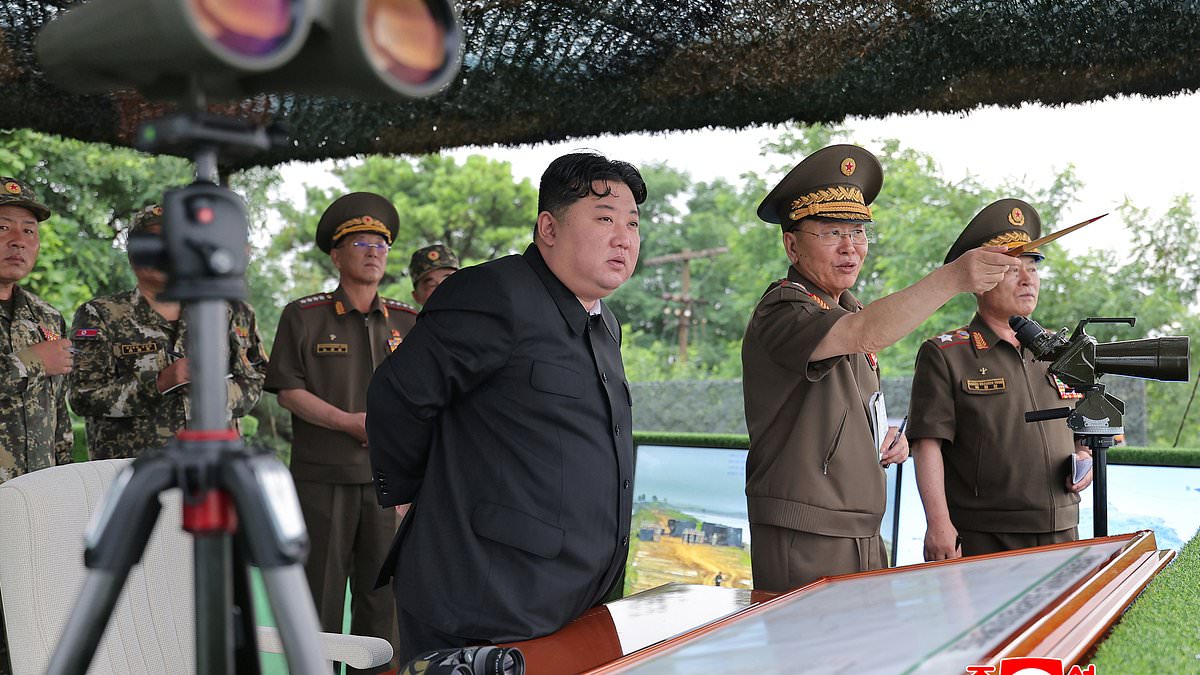North Korea has built a secret military base near its border with China, which may hold its newest long-range ballistic missiles that pose a potential nuclear threat to the continental US.
The base, located near Sinpung-dong in North Pyongan Province, lies about 17 miles (27 km) from the Chinese border, according to a new report by the Centre for Strategic and International Studies (CSIS) published on Wednesday.
This covert site has been under construction since around 2004 and became operational about ten years later.
CSIS used a mix of satellite photos, declassified documents and interviews to expose the base.
The base is thought to contain six to nine ICBMs that can carry nuclear warheads.
The facility may also hold missile launchers and adapted trucks ready to move the missiles. It covers an area roughly the size of New York’s John F. Kennedy International Airport.
What makes the base especially worrying is that it lacks obvious launch pads or air-defence systems.
Analysts say this suggests it is designed for mobile, solid-fuel ICBMs, which are quick to launch and difficult to detect.
These missiles can be pre-fueled and placed in position on large trucks, making them a strong deterrent and difficult to strike first.
CSIS warns that these weapons ‘pose a potential nuclear threat to East Asia and the continental United States.’
The base is one of around 15 to 20 undeclared missile sites across North Korea.
These include missile bases, storage sites, maintenance and warhead depots that have never been declared in official talks.
The report calls this the first open-source, detailed confirmation of the Sinpung-dong site.
In times of crisis or war, the missiles and launchers could leave the base, join mobile units, and fire from other parts of the country.
The think tank also notes that North Korea has around 50 nuclear warheads and enough fissile material to build up to 50 more.
North Korea’s secret base near Sinpung-dong lies very close to China as the location is meant to make it harder for US forces to destroy the site before any possible launch, according to Victor Cha, co-author of the report.
The country’s dictator, Kim Jong Un, has called for a ‘rapid expansion’ of the country’s nuclear capability.
The reports say the new development ‘represent the primary components of what is presumed to be North Korea’s evolving ballistic missile strategy, and its expanding strategic-level nuclear deterrence and strike capabilities.’
Since a failed summit with Donald Trump in Hanoi in 2019, North Korea has resumed missile tests and dropped its self-imposed moratorium on long-range weapons.
With the war in Ukraine pushing Russian president Vladimir Putin and Kim Jong Un closer together, Western intelligence believes North Korea sent around 10,000 troops to fight in the war.
In exchange, Moscow is helping with missile-related and space technology.
Western leaders have grown increasingly alarmed by North Korea’s rapid missile advances under Kim Jong Un.
In January, Ponyang tested a hypersonic missile that flew 12 times faster than the speed of sound.
South Korea and Japan both raised concerns, warning that existing interceptor systems may not be fast enough to stop such threats.
Days later, North Korea launched short-range ballistic missiles into the sea ahead of Donald Trump’s presidential inauguration.
South Korea called it a reckless provocation, while Japan and the United States vowed stronger security ties in response.
On May 8, Kim Jong Un personally supervised drills involving short-range missiles and large rocket systems that simulated nuclear counterstrikes.
North Korea has carried out more than hundreds of missile tests during Kim Jong Un’s rule, far more than under his father.
